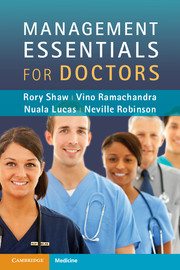Book contents
- Frontmatter
- Contents
- Contributors
- Foreword
- Preface
- Acknowledgements
- Section 1 Core knowledge
- Section 2 Core skills
- Section 3 Important bodies
- Section 4 Information, evidence and research
- Section 5 Money
- Section 6 NHS structures
- Chapter 33 NHS structure and organization
- Chapter 34 Commissioning healthcare
- Chapter 35 External regulators
- Chapter 36 Treatment centres
- Chapter 37 Who does what – the trust Board
- Chapter 38 Who does what – the Executive et al.
- Section 7 Operations
- Section 8 Safety and quality
- Section 9 Staff issues
- Index
Chapter 35 - External regulators
Published online by Cambridge University Press: 05 March 2012
- Frontmatter
- Contents
- Contributors
- Foreword
- Preface
- Acknowledgements
- Section 1 Core knowledge
- Section 2 Core skills
- Section 3 Important bodies
- Section 4 Information, evidence and research
- Section 5 Money
- Section 6 NHS structures
- Chapter 33 NHS structure and organization
- Chapter 34 Commissioning healthcare
- Chapter 35 External regulators
- Chapter 36 Treatment centres
- Chapter 37 Who does what – the trust Board
- Chapter 38 Who does what – the Executive et al.
- Section 7 Operations
- Section 8 Safety and quality
- Section 9 Staff issues
- Index
Summary
QANGOs
Government has found it useful to have organizations a little distant from the central government departments to do some of its business. These are the quasi-autonomous non-governmental bodies (QANGOs), arm's-length bodies (ALBs), non-departmental public bodies and department-sponsored committees or organizations. The advantages are that they can have a constitution which encourages more public participation, they can bring well informed and often very gifted people from walks of life outside government to focus on an issue, and of course if there are problems they are easy to close down with little blame attaching to the minister. There are a large number in healthcare, and the number and structure is set to change under the policies set out by the coalition government.
Government organizations outside healthcare have regulatory roles, such as the Health and Safety Executive and the National Audit Office. In addition, there are a number of membership organizations that have regulatory functions, such as the GMC, and completely autonomous organizations which have contracts permitting them to comment or contribute to regulation.
- Type
- Chapter
- Information
- Management Essentials for Doctors , pp. 107 - 112Publisher: Cambridge University PressPrint publication year: 2011



